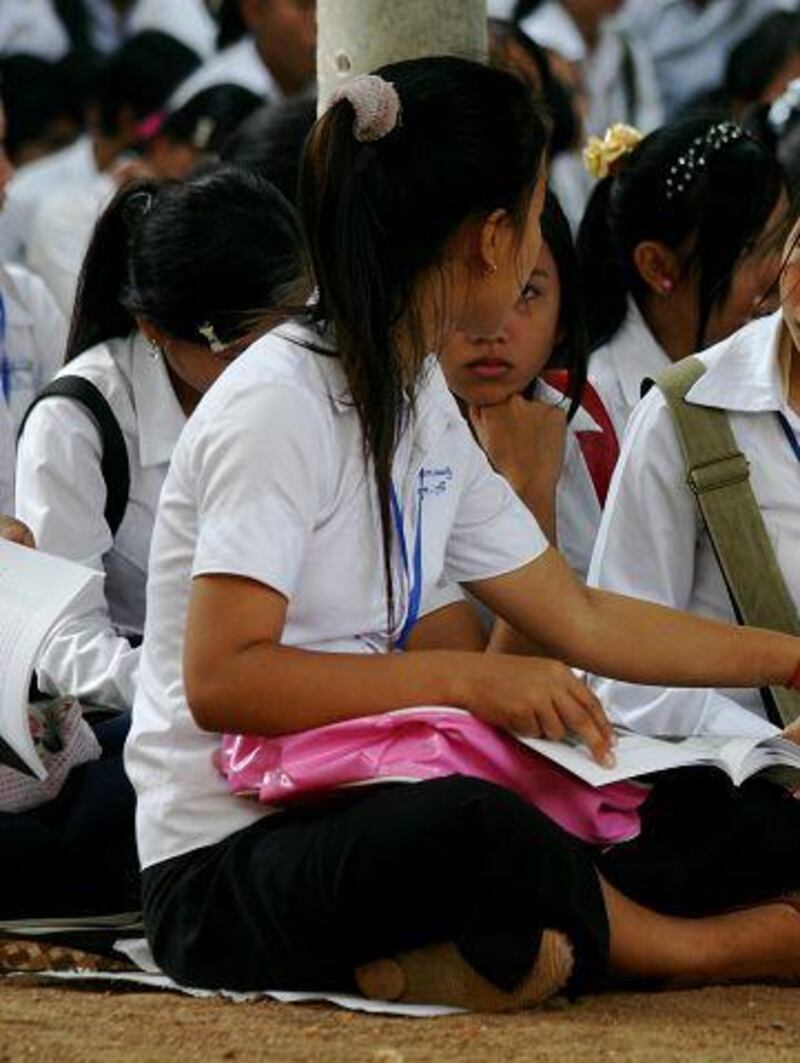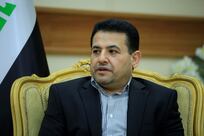PHNOM PENH // The 57-year-old teacher stood in a conference room packed with colleagues and observers and articulated what is perhaps the simplest yet most perplexing question about the regime that killed a quarter of its own population.
"Why did they behave the way they did?" asked Nguon Sophal, who teaches high school in the western city of Battambang. She was one of 180 teachers attending a week-long training programme to acquaint themselves with the first Cambodian textbook to discuss the Khmer Rouge in detail. This week, they will fan out across the country to instruct about 3,000 more teachers who will finally begin educating young Cambodians about the horror their elders lived through three decades ago.
It was a professional question for Ms Nguon, but it was also a deeply personal one. In an interview afterward, she said her husband, child, father and sister were all taken away and killed for no discernible reason. From his seat on an elevated panel at the front of the room, David Chandler, who first arrived in Cambodia as a US diplomat in 1960 and has written four books about the country and the Khmer Rouge, looked straight at her, thought about it for a few moments, and replied: "That is a very good question."
Mr Chandler had just spoken for more than an hour about the movement. The inner circle of Khmer Rouge leaders were intellectuals who studied in France, yet they despised the educated class so much that they tried to exterminate them in their own country. They were Marxist-Leninists, but their later "blood-curdling nationalist slogans that spoke of the Cambodian 'race' replaced the austere and often impenetrable language of Marxist-Leninism," Mr Chandler said.
The Khmer Rouge relied at different stages on support from Vietnam and China, as well as from the United States and its allies - odd bedfellows considering that the US dropped half a million tonnes of bombs on Cambodia while waging war against Vietnam, which then fended off a brief invasion from China in 1979. Haunting questions about the Khmer Rouge live on. Why did they turn the country into a vast torture camp where as many as two million people starved to death or were executed on the basis of paranoid conspiracies? Why did they kill doctors? Engineers? Why did they smash babies against trees?
"If one of your students asks, 'Why did the Khmer Rouge behave this way?' it's unfair to say you don't know," said Mr Chandler, who now teaches at Monash University in Melbourne, Australia. The challenge of explaining this complex and confounding history fell to one Khaboly Dy, the textbook's author who was born two years after the Khmer Rouge were vanquished to the jungles in 1979 by invading Vietnamese and Cambodian troops.
Previous history books issued by Cambodia's Vietnamese-backed government boiled the Khmer Rouge down into five lines. Even those references were removed in the early 1990s when Khmer Rouge leaders signed peace accords, promising to end their guerrilla war. As a high school student during the 1990s, Sayana Ser said she understood very little about her parents' and grandparents' experiences under the Khmer Rouge's four-year rule.
Now 28, she is helping co-ordinate the teachers' training programme that is run by the Documentation Centre of Cambodia (DCCAM), which produced the book. She began volunteering at DCCAM after she realised that all she knew about the Khmer Rouge were tales overheard from her mother talking with friends. The stories sounded so awful that she only half believed them. "I heard them talking, but they didn't tell their children," she said. "I thought it was fiction, used to make us more careful."
Poring over documents at DCCAM, she discovered that the stories of starving people foraging for leaves to eat, of torture, mass executions and rampant disease were true. "The survivors want to us to know we won't forget their suffering," Ms Sayana said. Khaboly Dy, the author, had another reason for writing the book: To "guide students away from anger, revenge, hatred". Rather than going into a detailed history of the Khmer Rouge, Mr Dy said he laid out a foundation that he hopes will encourage interested students to do further research on their own.
The textbook avoids in-depth political analysis of the movement. Instead it focuses on events. It names only the most senior leaders of the regime, including those now awaiting trial at a UN-backed war crimes tribunal. "Lots of people say the history of the Khmer Rouge is politically sensitive," Mr Dy aid. Many former Khmer Rouge members are now high-ranking officials, such as Keat Chhon, the deputy prime minister and finance minister, and Heng Samrin, the president of the National Assembly. The presence of former Khmer Rouge members in today's government is no doubt one reason that Cambodia has been reluctant to educate its youth about the Khmer Rouge. But the textbook "doesn't label too many individuals", Mr Dy said, adding that he received "sincere support" from the education ministry.
On Wednesday, the ministry's undersecretary of state, Tun Sa-Im, was on hand to help distribute the new textbooks to students in Ta Khmeo City, about one hour's drive from Phnom Penh. A token number of students lined up and bowed politely to Ms Tun before receiving the textbook. Then the 180 teachers passed the rest of the books out to 3,000 students who were seated neatly in rows. In their white uniforms, in the shade of large trees, many students eagerly flipped through the pages, examining the black and white photos, sometimes turning to comment to their schoolmates. A microphone was set up for some of them to ask questions. "Why did the Khmer Rouge kill people?" asked Sa Vattana.
Mr Dy explained that the Khmer Rouge leadership believed that their country was infested by spies and enemies of the revolution who needed to be eliminated. "For more information go to chapter five," he added. foreign.desk@thenational.ae





